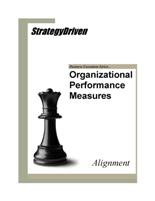The Advisor’s Corner – Why Is My Organization’s Vision Unclear To Employees?
Question:
My subordinates frequently asked for opportunities to speak with our business unit’s vice president in order to gain a sense of what she sees as the organization’s overall vision and what she feels is going well and what could be improved upon. Since the company’s vision is commonly held by all members of the leadership team, including myself, why then do my subordinates continue to request these types of meetings with the senior executives?
StrategyDriven Response:
We find the circumstances described all too frequently at the organizations we have worked with. In our experience, the most common causes include communication voids and conflicting messages.
Many times, employees will seek information from other sources when information they perceive as important does not reach them. These communication voids may exist for any of a number of reasons including:
- the organization does not have a vision statement or a cohesive, observable direction contained within its published documents such as its business plan or annual report
- the communication is not made
- the channel through which the communication is made does not reach the employee or employee group
- the employee does not routinely use the communication channel(s) through which the information was promulgated
- the message’s importance is unclear at the time of the communication and subsequently the employee does not remember the information provided
- other more important information was simultaneously communicated obscuring this particular message
- the employee is bombarded with a high volume of information and the message is subsequently lost
- the employee does not view the source from which the information came from as being credible (This is a particular problem as it indicates that you, the boss, are not a credible or believable source of information and direction.)
In other instances, a lack of alignment exists between the various vision communications made to the workforce. Under these circumstances, employees will tend to seek direct communication of the vision from increasingly senior managers within the organization; believing only the message from the top to be valid. This challenge may be caused by occurrences such as:
- the vision communication presented by the employee’s immediate supervisor is unclear or appears to conflict with that of other information sources
- general misalignment exists between various vision communications including written, verbal, and observable
- in the absence of a vision statement, the collection of organizational objectives and initiatives do not readily present a cohesive, observable direction
- decision-making authority and influence is maintained at a high level within the organization such that credible direction setting is only viewed as coming from executives and/or senior managers
- the organization’s performance measurement and rewards systems appear to be misaligned with respect to the organization’s stated vision and mission
Clear communication of the organization’s vision begins with sound strategic planning and the translation of that plan into quantifiable, measurable actions to be performed on a day-to-day basis by the workforce. The following StrategyDriven best practices highlight how best to achieve this portion of the process.
- Strategic Planning Best Practice 1 – Make the Mission Measurable
- Strategic Planning Best Practice 2 – Prioritize the Mission
- Organizational Performance Measures Best Practice 1 – Vertically Cascading
- Organizational Performance Measures Best Practice 2 – Horizontally Shared
- Organizational Performance Measures Best Practice 4 – Core Performance Measures
In addition to these activities, we recommend there be frequent communication and reinforcement of the vision with direct reports. Communication should be made repeatedly through diverse channels to ensure all employees are reached and the message’s importance clear. Reinforcement should not only take place during the annual business plan roll-out but should also be incorporated into employee goals as well as being a part of routine one-on-ones, feedback, and coaching.
Vision communication should take place such that subordinates view the direction as coming directly from his or her manager. It is only when a manager clearly communicates the vision without deferring responsibility for its development or authority for its implementation to senior management that employees will view him/her as having credible authority to direct their actions. If, in the manager’s experience, circumstances are likely to arise where it will appear that his/her directions will conflict with those of senior management then he/she should take the steps necessary to gain executive buy-in and commitment prior to communicating the vision to subordinates.
Final Thought…
The StrategyDriven website was created to provide members of our community with insights to the actions that help create the shared vision, focus, and commitment needed to improve organizational alignment and accountability for the achievement of superior results. We look forward to answering your strategic planning and tactical business execution questions. Please email your questions to [email protected].



 Less than three days remain until the StrategyDriven Podcast launch! In our first episode, Nathan and Howard explore the question: “What makes an organization strategy driven?”
Less than three days remain until the StrategyDriven Podcast launch! In our first episode, Nathan and Howard explore the question: “What makes an organization strategy driven?”